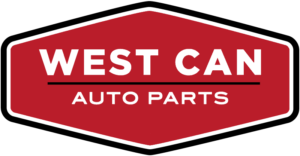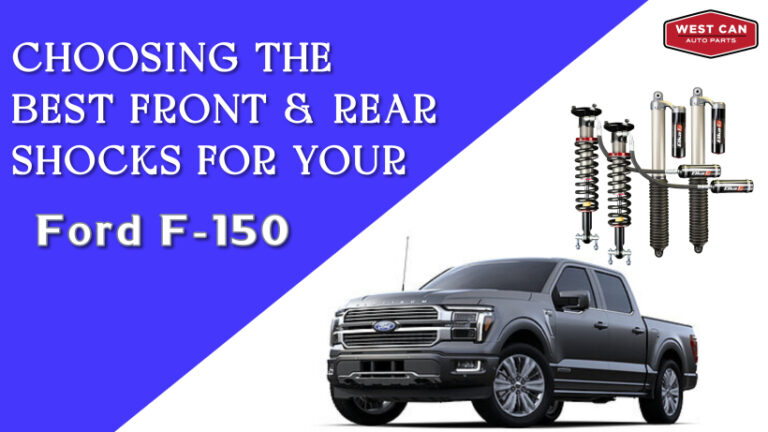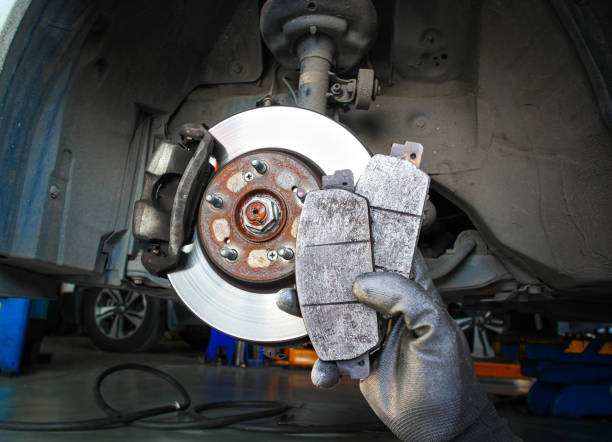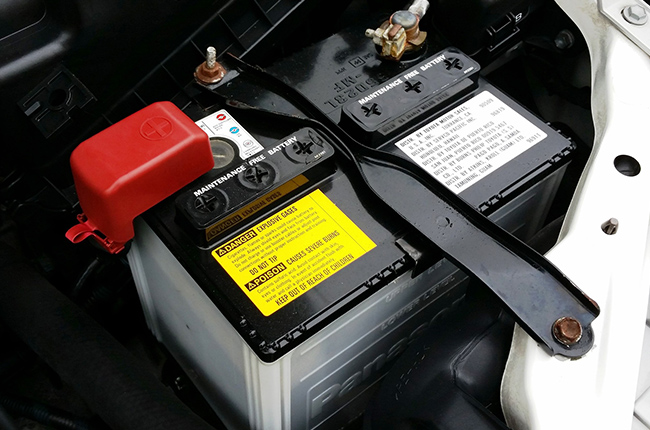HOW A CAR DIFFERENTIAL WORKS & WARNING SIGNS IT MAY FAIL
Many people hear differential words and think of 4WD/AWD vehicles but what are the differences in cars/trucks? How does it work, is there a different type, what is a gear ratio, is that the same as the transfer case? Most importantly, how should you maintain it and how you can find out whether it failed. Keep reading to find out!
Differential Roles in drivetrain
Differentials receive power from the driveshaft and deliver it to the wheels. A differential consists of many different components. The driveshaft typically connects to the pinion shaft/gear through a universal joint, the pinion gear spins a much larger ring gear, attached to the ring gear are two parallel spider gears that then attach to side gears that are at the end of the two axles. The axles then attach to your hub, which is the piece that connects to your wheel. All of these things together allow the wheels to spin at different speeds and are pivotal in turning.
When you make a turn, one of the wheels on your differential must turn sharper than the other and therefore it is necessary the differential has the ability to allow the wheels to spin at different speeds.
Differential type
- Open differential: There is an open differential, which is the most common type originating from producers. Open differential divides the torque equally for both wheels. When the tire loses traction, fewer torque is applied to both wheels until the traction is set again. This is good for daily vehicles because it allows the wheels to rotate at different speeds and help ensure a smooth rotation.
- Limited Differential Slip: Limited Differential Function, especially as an open differential, the only difference is to have additional components, to be a set of clutch plates, a more complex differential dental gear train or special thick liquid. One of these three components feels when the wheels lose traction and will send torque to both wheels, not one to regain traction.
- Differential Locking: Differential Locking is similar to the two previous differentials, the only difference is that the user can choose whether the drive train is open or locked. This feature is good to turn on when you are in a situation where you need more traction such as in sand, snow, dirt or mud but can be a problem when on a hard surface. When the vehicle is locked and goes to the turn, both wheels try to spin at the exact same speed, this is not possible because one of the wheels takes a shorter path. These complications can cause things like motion axis because the grip of the grip between tires and sidewalks will not allow the wheels to rotate at different speeds and torque then transferred to the weakest component, usually into a shaft.
- Differential Vector torque: The last differential type is differential vectors. This is the most complex differential form and consists of additional trains and many sensors and computers that control how much torque is given to each wheel. Whereas in other vehicles, there are only mechanical aspects of what controls the change in torque. This is usually found in high -class luxury sports sedans or crossover like Audi, Lexus and BMW. This is not used in most vehicles because of the cost of producing it and the complexity of the system itself.
Gear Ratio
Differential gears ratio is the difference between the number of teeth in the ring gear and pinion teeth. If your ring gear has 41 teeth and your Pinion teeth have 11 teeth (Pinion gears are always smaller) than your gear ratio is 41/11 or 3.73. This means that driveshaft (remember driveshaft is connected directly to the Pinion teeth through U-Joints) must rotate 3.73 revolution so that the wheels change 1 revolution. This complex system allows producers to control torque/acceleration and the highest speed capability based on the functional purpose of the car. The higher the gear ratio (eg. 5.13), the more axis that must be rotated to turn the wheels. This is good for vehicles that require more torque such as trucks because it increases their attraction capacity. A higher dental ratio usually consists of parts made of more durable materials, which help ensure keeping vehicles work on the road.
Lower dental ratios (eg 3.73) make driveshaft must rotate less to reach more rotation on the wheels, this is good for small cars that do not need torque or as much power as distributed to the wheels. These cars are more fuel efficient and better for the use of the highway.
The difference between transfer case & differential
Transfer cases allow power to be distributed to both the front and rear wheels and are only found in 4×4 and AWD vehicles. The transfer case gets power directly from the transmission and delivers it to the rear wheels or in some vehicles it delivers power to both the front and rear wheels. Distributing power to the differentials is a huge task and takes meticulous maintenance and servicing to ensure no fatal flaws when you are out on the road. Transfer cases in AWD cars are typically automatically controlling all 4 wheels and usually have a button that will “lock” all 4 wheels for situations when you are moving slow and need more traction, like snow or mud. 4×4 vehicles typically have either manual transfer case selection, shifter, or electrical selection button or switch. These selectors allow the vehicle to be driven primarily in 2WD, with the option for 4×4 high and low gears depending on the application.
Transfer cases and differentials have similar functions, they both take power from the transmission and reroute it. A transfer case takes power directly from the transmission and delivers it to both the front and rear differentials through driveshafts. A differential either receives its power from the transmission or the transfer case via driveshafts and delivers it to the wheels. While they have similar gear trains a transfer case never has to deliver power to the wheels, so it does not have anything more than gearing components inside it. Since differentials have to deliver power to the wheels they consist of more components such as axles, brakes and suspension components.
Axle Role in Differential & Drivetrain
The axle connects directly to the ring gear through a series of wheel bearings and provides power from the ring gear to the hub that sticks to your wheels and rotates it. They can consist of one solid part or several smaller parts. If you want to learn more about the role played by Axle in Drivetrain, check the role of Axle in drivetrain.
Maintenance
Maintain your differential and know the failed differential signs are very important in keeping your car on the road. The liquid in the differential is intended to be replaced in general every 30,000-60,000 miles, but each producer recommends something different. To ensure how often your liquid must be replaced, what type of liquid is used and the amount, please refer to the owner’s manual.
Bad differential symptoms
In addition to regular fluid changes, a careful examination of differentials must also be done regularly. Components such as wheel bearings, universal connections, internal gears, and axle all tend to make sounds when they begin to fail. If you hear all kinds of metals on metal milling, appear, wading or clicking that comes from the front or back of your vehicle, it is important for you to immediately see it! More times than not, the part that began to fail, than those who failed, cheaper to be replaced. Another way to check your differential for signs of failed components is to check the pieces of visually. If you see wet or wet spots around the differential in any place this can be a sign that one of the many seals that keeps the fluid in the differential failure. This seal plays a very important role in maintaining a differential fluid in the differential which allows fluids to keep metal components from being too hot. As well as maintaining the liquid in this seal, also maintaining things like dirt, sand, and water out. Having sand or dirt entering your differential is very bad because it creates more friction among moving gears and causes disaster failure. When looking for a liquid leak, make sure to also look for anything that is seen not in its place, many times the damaged components or on the way out will be seen out of the line.
What happened when my differential failed?
If your differential starts or completely fails, don’t worry! You have an option. First, you can take it to the store, fix it or change differential. This will be the most expensive choice, it really depends on if they fix or replace it. Differential improvement can be expensive when things like gears need to be replaced but may not be too hard when it is something like a seal that needs to be replaced. Either way, labor will be charged very expensive. On the other hand, they can replace all the full differentials and this is another item on the bill they can pay. This is because they usually buy spare parts at a cheaper price and then mark your bills. Why? Because they can!
Depending on what is wrong with differential you can try to fix it yourself or do a different rebuilding, which is your second choice. This can be as simple as requiring changes in differential fluids and equally complicated as needed new teeth. Even if you fix the seal and replace the gear, this requires a lot of time and this is not a guarantee that it will not start to fail again later.
Your third choice may be the cheapest and easiest choice in the long run. Just buy used on the right brand and model! Then you can replace it yourself or ask for a trusted mechanic for you. We like to mention this type of “backyard” mechanic and you can learn more about why they become more popular by reading “why automatic repair costs will continue to increase”.
You do not want to buy new differentials for vehicles that are halfway or more throughout their lives, it will waste money. This section does not tend to break during the lifetime of the car, unless it is not maintained properly or wrongly. Instead, buy a used one that does not fail and replace! This will save time to try to improve differential complex components and reduce costs caused by mechanics that increase you!
Now, you might ask questions, where can I find the differential used without paying arms and legs? We advise you directly to the source and cut every middle man who provides additional costs just to be an intermediary! The source you need is my car shop! We not only have one to match your brands and models, but we have a fair price that will not damage your bank. At the same time, we offer a six -month warranty to all our car parts and offer free shipping throughout the Canada!









